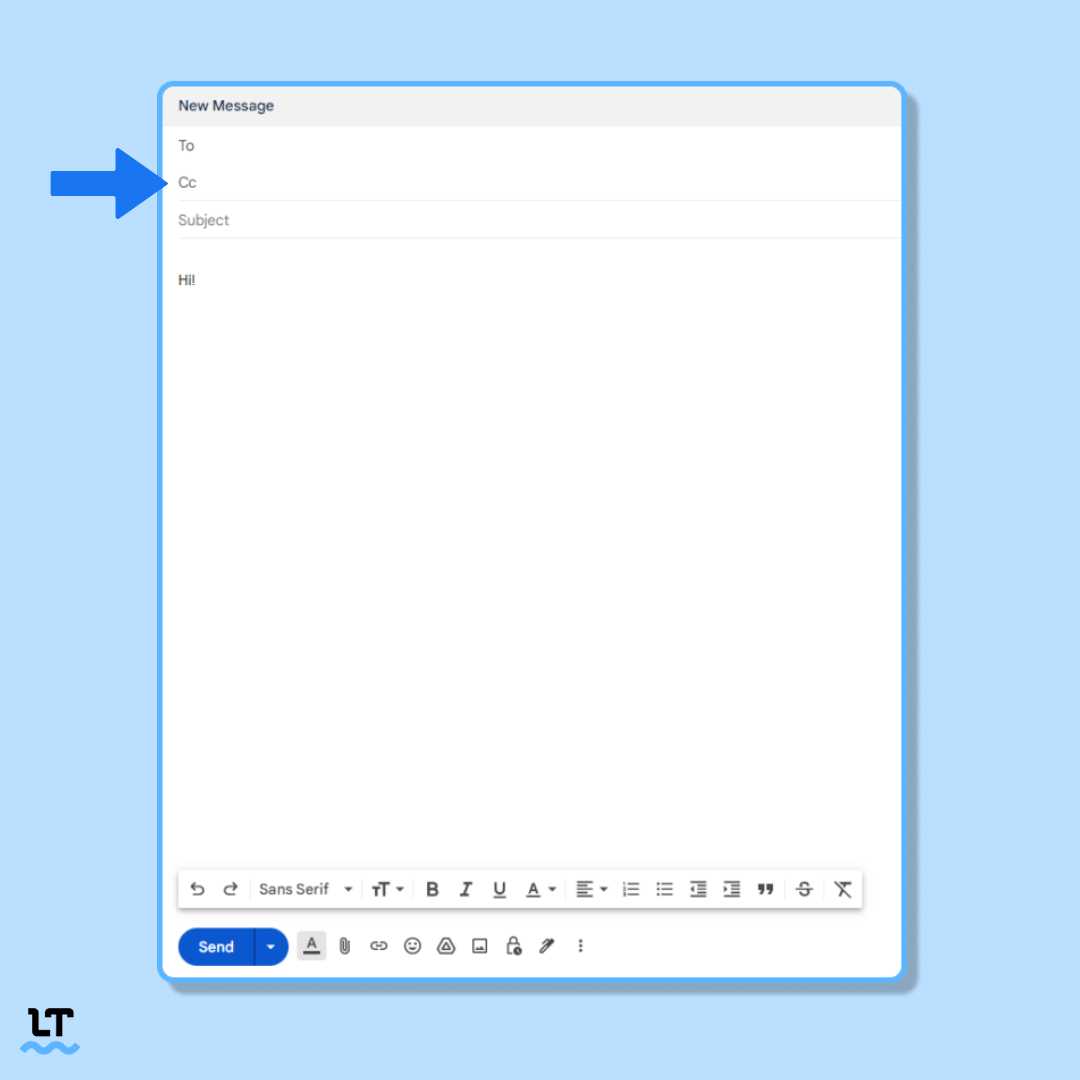What Does “CC” Mean in Email Lingo?
Maybe you’re wondering what the “CC” you see while writing emails signifies.
Or perhaps you know what it means, but are curious about how we came to use that abbreviation in today’s modern world.
We’re going to quench your curiosity about CC in emails by teaching you what it means, reviewing the context behind it, and showing you the correct way of using CC as a verb.
Let’s begin!
What Does “CC” Mean in an Email?
In the email world, CC is short for “carbon copy.”
CC informs the main recipient that a copy of the email was also sent to someone else.
You may notice different capitalizations of this abbreviation—CC, Cc, and cc are all acceptable.
The option to CC someone is usually found under the main recipient’s email address. You can add more than one email address to send a copy of the message to multiple people.

Some people have taken CC to mean “courtesy copy,” but while this phrasing aligns better with its contemporary usage, it disregards the history behind this acronym, which we’ll elaborate on in the following paragraph.
The History of “CC”
Before photocopiers existed, copies were made by placing a piece of carbon paper between two sheets of paper. Anything that was typed or written on the top page would then be imprinted on the bottom one, which would be referred to as the carbon copy of the original.
It was a convention to include the abbreviation CC before a colon and beneath the writer’s signature to indicate to the primary recipient that carbon copies had been produced and sent to the individuals listed after it .
Using “CC” as a Verb
Now that we know why we use the abbreviation CC in emails, let’s review how to utilize it as a verb.
The past tense and past participle are spelled as cc’d, not cced (according to Merriam-Webster and Oxford Dictionaries).
The gerund and the present participles of CC are cc’ing, not ccing.
Perfect Your Email Etiquette
Using CC correctly is just one of the many components you should be familiar with if you want to enhance your email etiquette.
LanguageTool—an advanced, multilingual writing assistant—can help you impress your colleagues and bosses with your impeccable emails by suggesting alternatives to overused email phrases, correcting embarrassing typos, and paraphrasing your sentences to enhance tone and style.
Give it a try.
